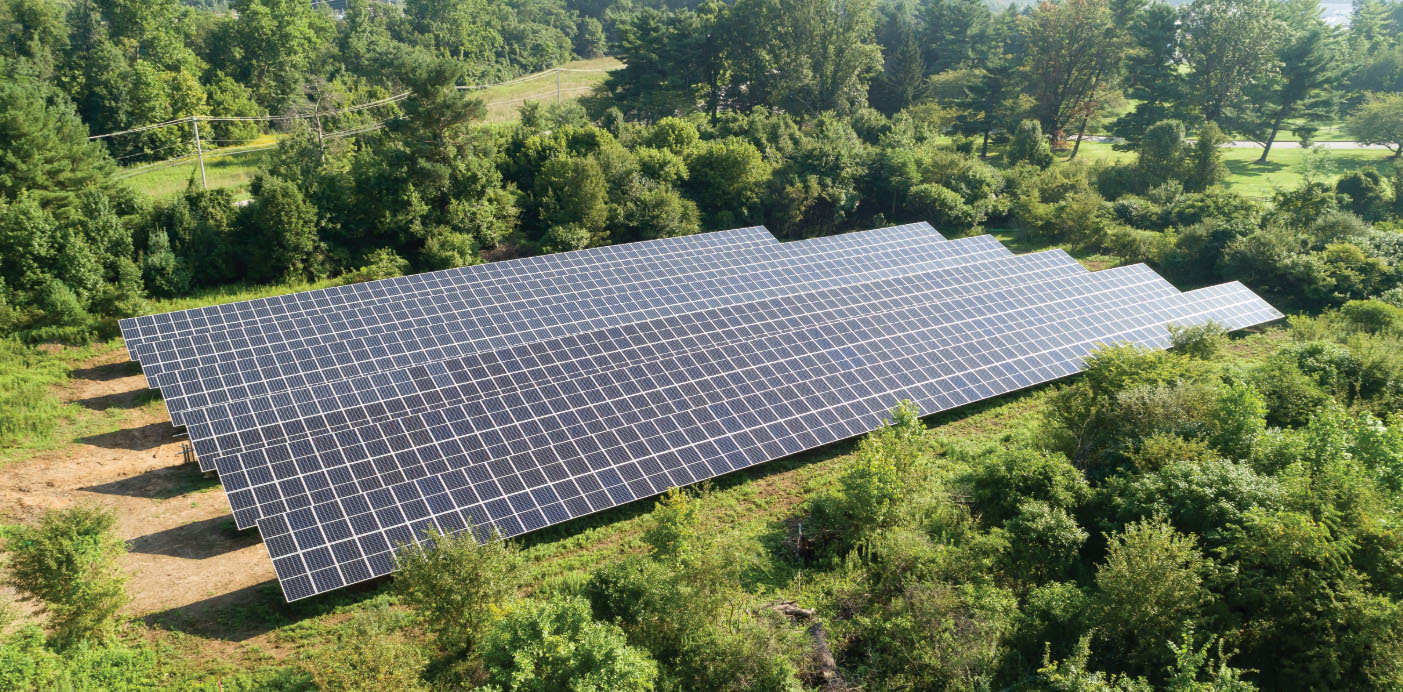
The Sun Shines Bright on Church’s New Solar Panel Field in Whitemarsh

Years of planning have culminated in the construction of a solar farm at St. Thomas Church in Whitemarsh, Montgomery County. Church members are excited that the installation will reduce St. Thomas’ electricity costs over time, lower its carbon footprint, and maybe even become a source of additional income.
“With the completion of our Solar Farm, St Thomas’ will get almost all of its energy using just one acre of campus,” said Jim Pasquarella, the church’s senior warden. “It’s our boldest step yet toward our commitment to cut our carbon footprint in half.”
The project, only the second commercial-sized solar installation to be built in the township, sprang from a significant uptick in St. Thomas’ operating costs after a successful capital campaign and expansion three years ago. By 2019, their PECO costs had risen almost 30%. At that point, staff and church leaders got creative and formed a task force, which recommended that two acres of their land be used to install solar panels.
In the short term, the church expects to generate income from the sale of Solar Renewable Energy Certificates, or SRECs. In the long term, once they own the panels, they hope to continue that practice, along with seeing their electricity costs vastly reduced.
The panels will provide the majority of St Thomas’ electricity; the costs that remain are reduced to panel maintenance, PECO distribution costs and the purchase of electricity the church requires over and above what the panels produce. The panels come with a 25-year power producing warranty, and the task force estimates significant energy cost savings over the life of the project.
The area where the panels will be installed is known as the “Back 10”, and options for its use have been a source of discussion among church leaders for years. A long-time lay leader in the church who was active in prior discussions regarding use of the area, wrote in a letter to the church’s Vestry in support of approving the project:
“I believe the business and financial structure of the [solar panels] proposal is solid…Another important positive to me is the environmental impact: As a Christian community, we have a responsibility to preserve this incredible earth God has given us.”
The potential for the panels to conserve energy is impressive. In all, 754 panels were installed, which produce as much electricity as used by 42 homes. The church’s research indicates that a system of its size can eliminate the same amount of carbon emissions that would result from charging over 35 million smart phones, or would reduce the equivalent greenhouse gas emissions from switching over 10,000 incandescent lamps to LEDs.
The land where the panels are located is flat with an excellent southern exposure, which makes it an ideal location. Some brush had to be cleared prior to installation, but as little as possible was removed so that what remains will hide the panels from street and parking lot views. The project required no permit variances, and the cluster of community gardens nearby was not affected.
As part of their research, the task force needed to consider the viability of panels for a non-profit. While tax deductions and credits for solar installations are well known, the group was unsure how a nonprofit that pays no taxes would be able to leverage them. As it turns out, the PSA enables all tax incentives to be fully leveraged and monetized.
The task force also views the panels as a gift to the community, and is excited the project supports the Genesis Covenant, adopted by the Episcopal Church in 2009 In it, the church recognized the crisis of climate change and the need for all faith institutions to take practical actions to address it. The covenant recommends that individuals and faith communities reduce energy use, save money and care for creation.
“Solar fits perfectly with all of our priorities,” Pasquarella said. “Our preschool, for example, developed an incredible STEAM program (Science, Technology, Engineering, Arts Mathematics) for ages 2 - 5. And now with our solar field on campus, I can’t wait to see what the world’s best early childhood educators do with creating fun and interactive programming that leverages our solar farm.”
